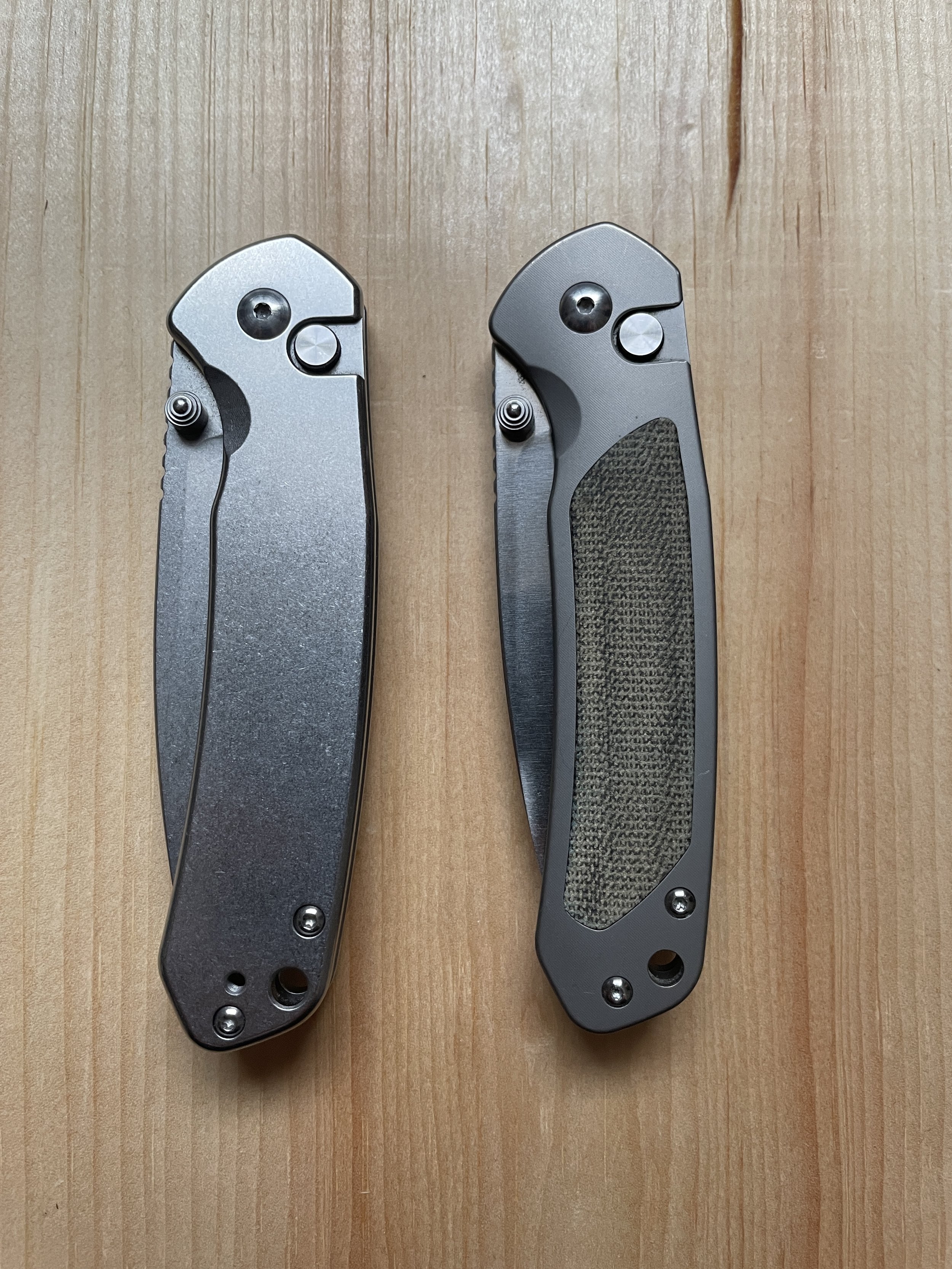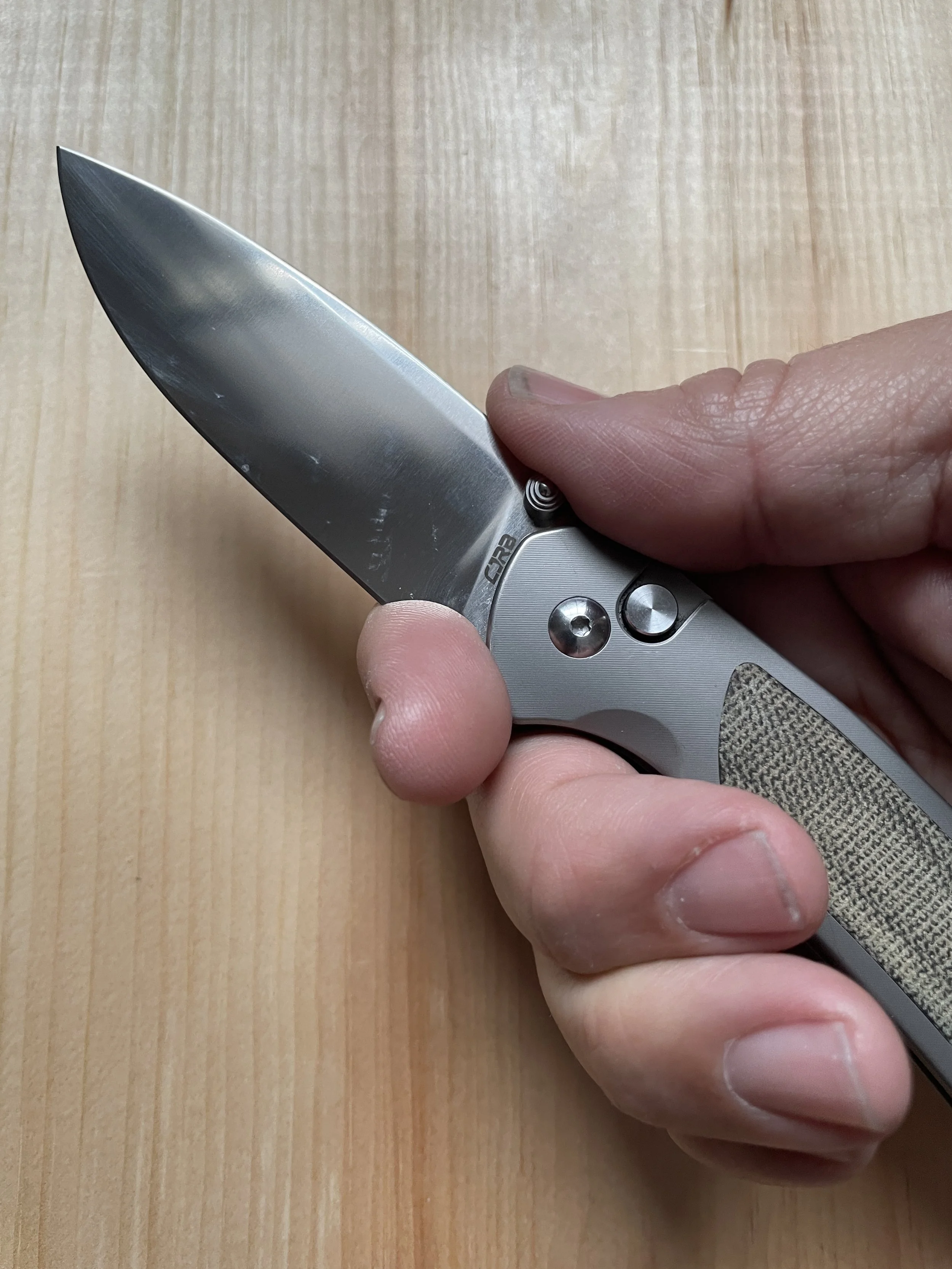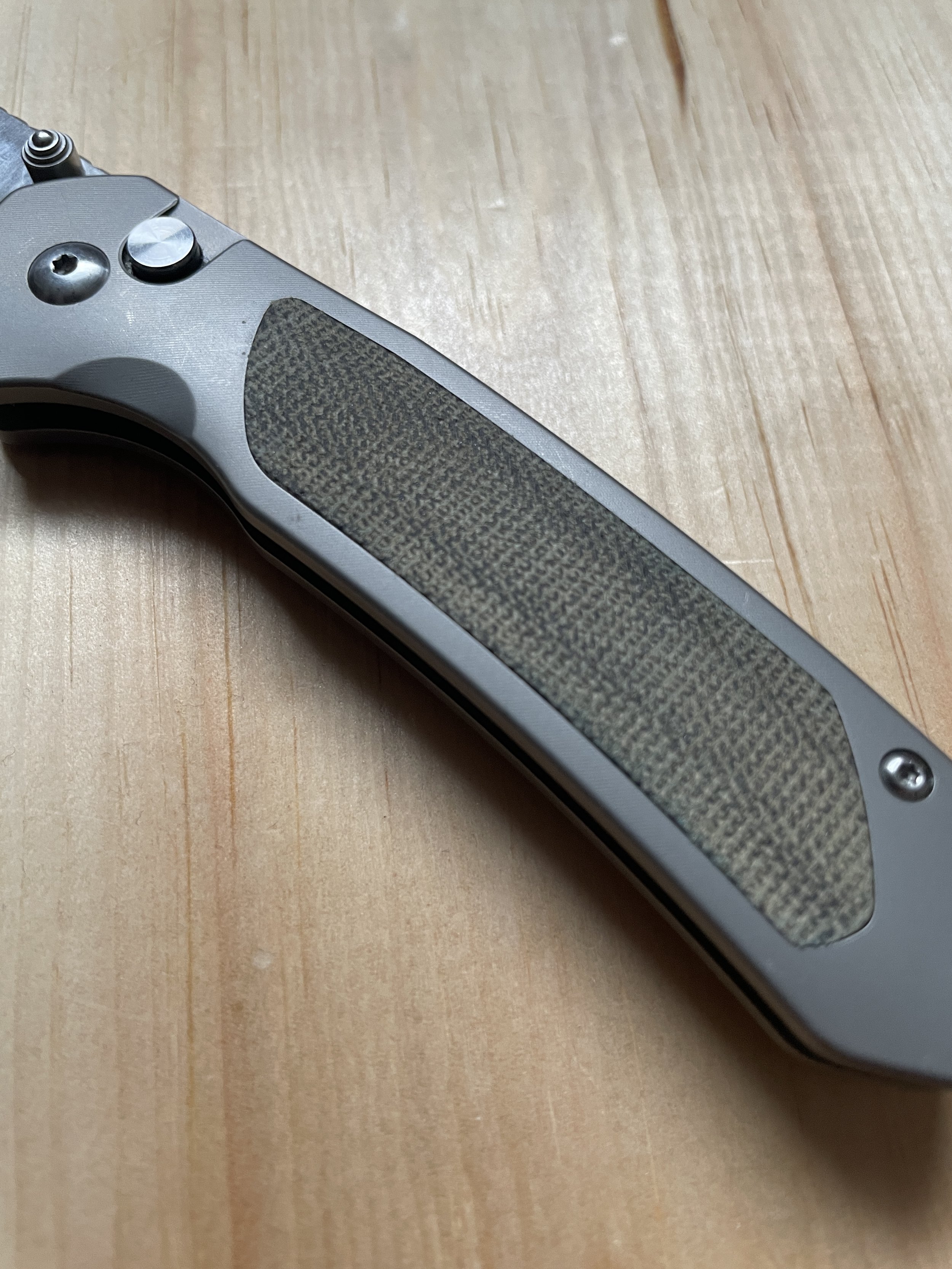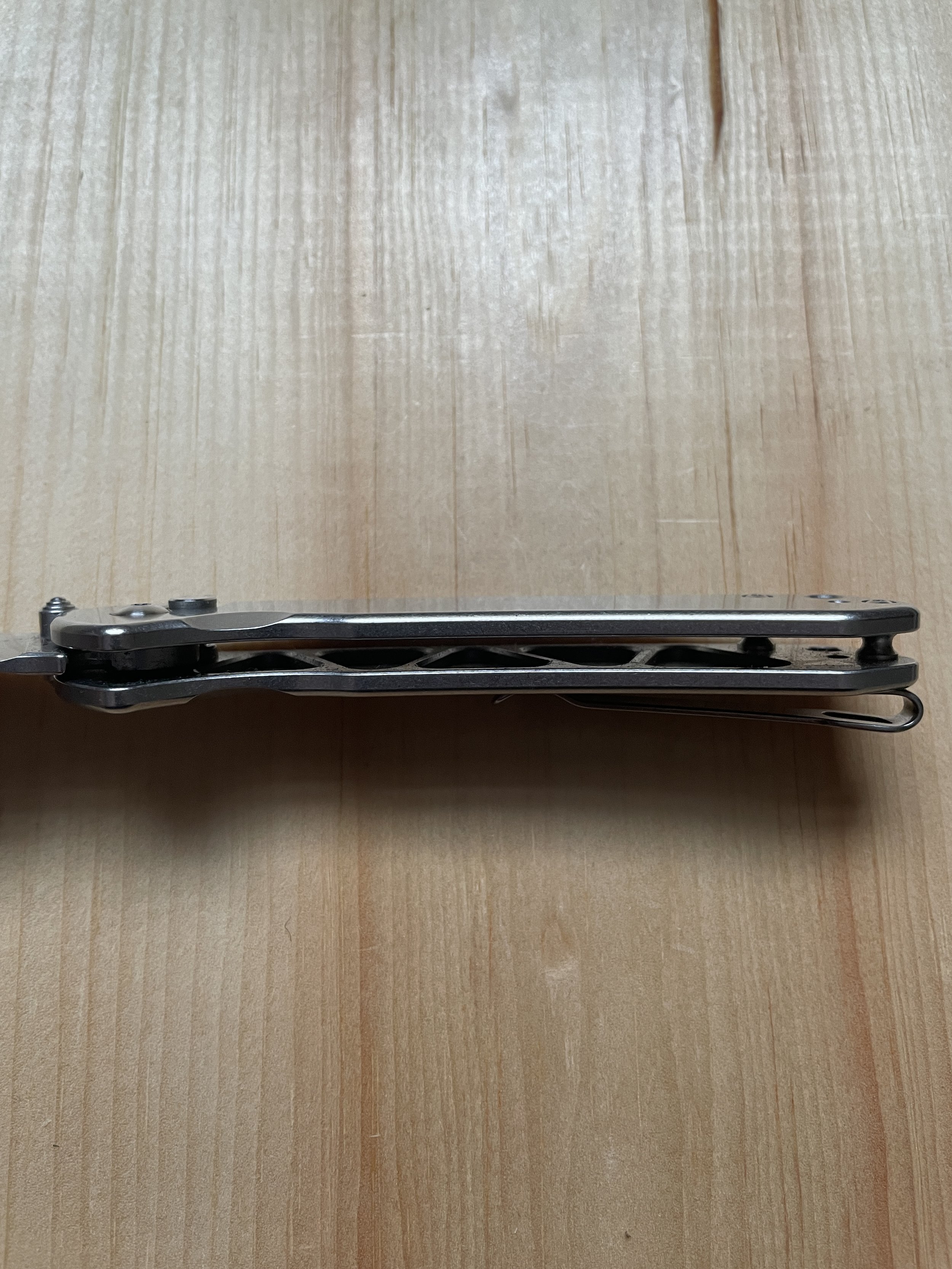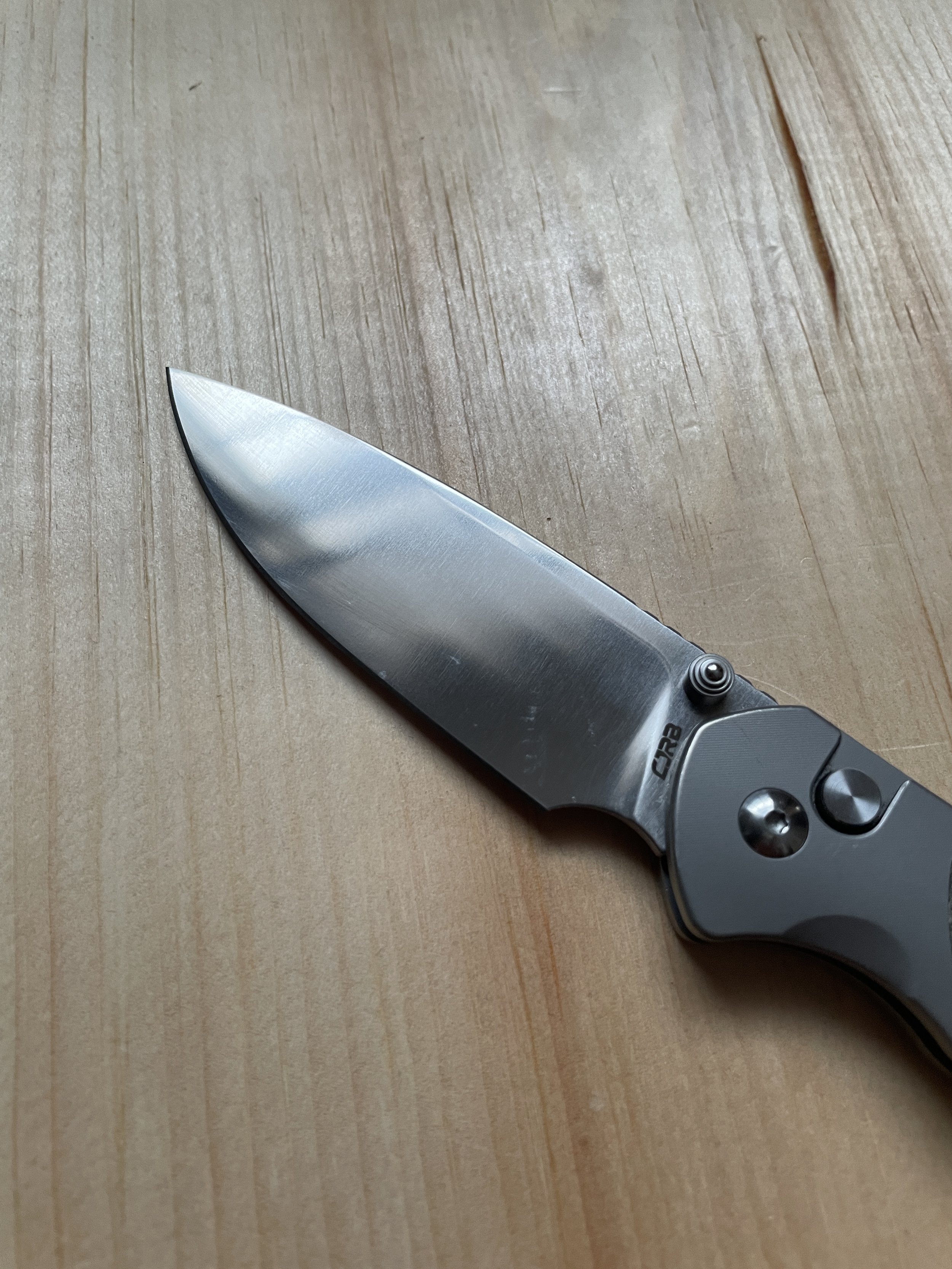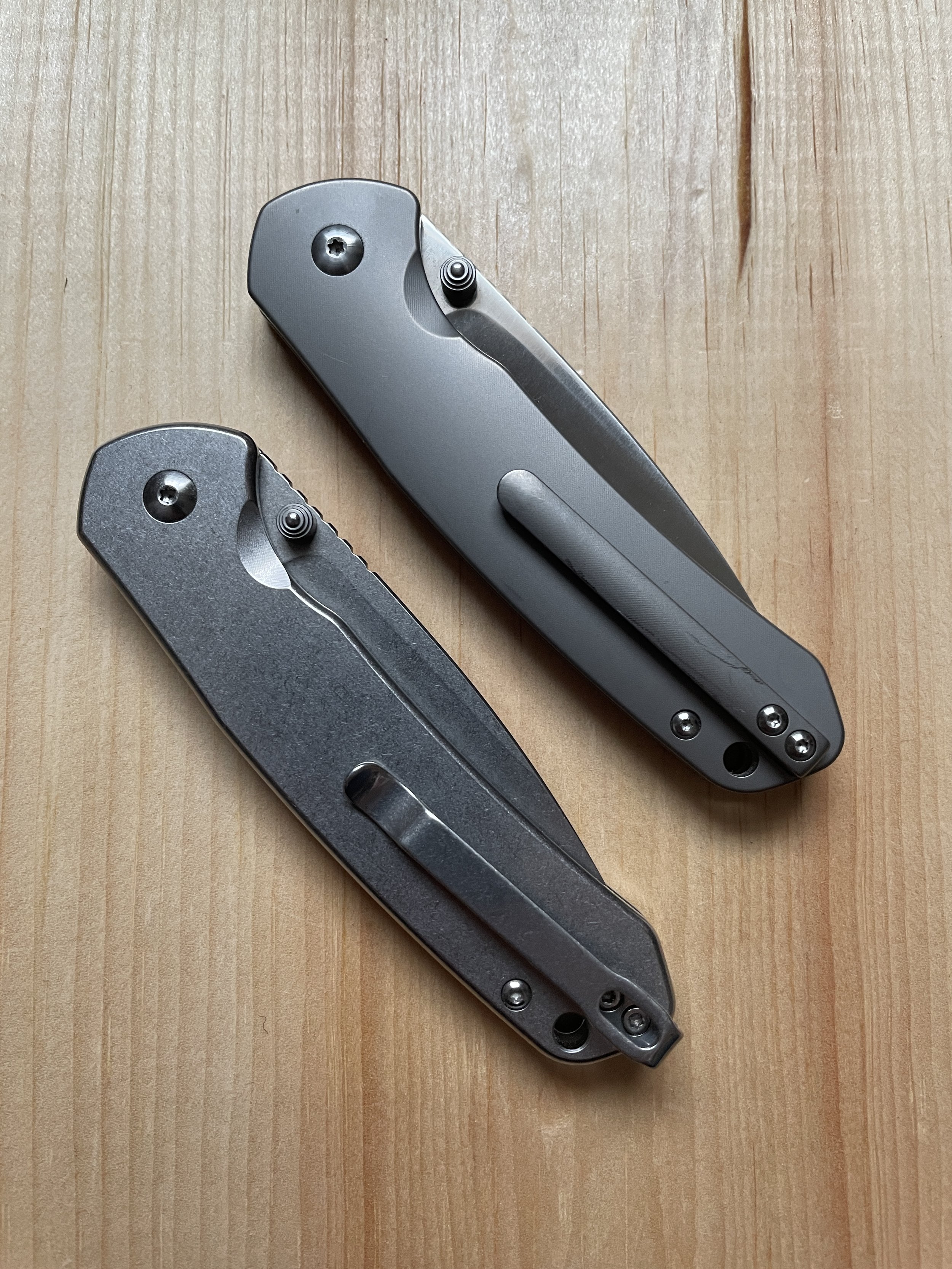CJRB Pyrite Review
One of my favorite parts of AG Russell stuff was the catalog. It wasn’t just a list of knives, but micro-editorials by AG and Goldie (and whoever else wrote the copy) about knives. Often times the Russell’s encyclopedic knowledge of knives and the knife industry would drop into this or that paragraph about some random knife. One tidbit that I learned there was the history of the button lock. Originally it appeard only on very high end knives as the machining tolerances needed to make it work properly were very small. Without a machining whiz, button locks were either extremely expensive (Russell’s post came in the context of selling a William Henry knife) or non-existent.
But the machining revolution continued apace since that catalog and we now have budget knives that have flawlessly functioning button locks. One of the first of those was the CJRB Pyrite. As CJRB is want to do, they produced two versions initially, the budget stainless steel handled version and an uber nice high end edition with sculpted Ti handles. Since then the Pyrite “platform” has been iterated upon dozens of times. They had a Kickstarter with high end versions of the knife, they have new blade shapes, and now there are “mini” versions. These iterations are all made possible by the fact that once you have the geometry and dimensions for the button lock, the thumb stud, and the pivot locked it the rest of these things can be changed to an almost infinite degree. Essentially, the Pyrite can be anything now from a massive tanto to a miniscule wharncliffe. All of this is possible because now, even budget makers can readily pull off a button lock.
Let’s take a look at what might be one of the most important knives of the last two years.
Here is the product page. As mentioned above there are nearly an infinite number of variations and even Artisan/CJRB calls the knife the “Pyrite Family.” The S35VN version was a sprint and is no longer in production. The SS version is. Here is a video review. Here is a written review. Here are the review samples, provided by CJRB:
Quick Review Summary: CJRB Pyrite—Upending the value calculus for the entire knife market since 2022.
EDITOR’S NOTE: I am reviewing both models, the Stainless Steel handled version and the Titanium handled upscale version. They will be noted as SS and Ti when the scores differ.
Design: 2 for both
This is a pretty simple design—a drop point with a slightly curved handle and an index notch. If you averaged out a knife designed since the 2000s, it would look something like this. But average is not bad. In fact, its not even boring. The kinetic action, rock solid lock up, great finger choil, and the excellent blade make the Pyrite not just interesting, they make the design very good. Look, the Sebenza works for a reason. A lot of thoses reasons apply here in equal force. Simple is often very good, we just don’t have the attention span for it anymore.
While I like the Ti version better, honestly, the SS handled version has many of the same good traits. The design is really not that complex and while the entire Pyrite platform is ideal for modifications and iterations (particularly inlays), the bones are super solid. One of the KS versions with a modified wharncliffe blade in S90V and some fancy inlay would be pretty awesome and that is in large part because the original form—the stainless steel version—is pretty damn good. As a side note, I find it funny that Sal Glesser’s preference for first iterations of knives being made in stainless steel still holds true today. If Sal does it, it must be pretty good.
Fit and Finish: 2 for both
The use of a button lock all but guarantees some top flight fit and finish. Every bit of these two knives, despite the SS’s low price tag, is pretty darn spot on. There is no blade play, no wiggle in the lock, and no stray machining marks. The Ti version is, quite frankly, flawless. Its a bit scary that these knives are this cheap. It is also a sign of things to come.
Grip: 2 for both
While the SS version is very smooth, the shape of the handle in combination with the clip, the choil, and some minimal jimping provides for plenty of grip. I wouldn’t use the SS version in gloves, but in every other scenario it has been fine. The Ti version is actually quite grippy thanks to the some seriously fuzzy micarta and all of the shared features.
Carry: 2 for both
A quick peak at the SS version might have you worried that it would be a boat anchor. Most slab sided stainless steel knives are. But when you have the machining prowess to produce perfect, budget priced button locks, you also have the ability to really lighten stainless steel handles. No SS knife I have seen has as much internal milling as the Pyrite does. The Ti version is similarly good in the pocket thanks to the lighter base material and a generously sized inlay of micarta. I wouldn’t consider these to be ultralight, but they are quite nice in the pocket, one surprisingly so.
Steel: 2 for SS; 2 for Ti
AR-RPM9 is a powder version of 1.4112 stainless steel, the blade steel found in most Victorinox blades. With the addition of purer composition, thanks to the PM process, and some “rare earth elements” according to Artisan (CRJB’s parent brand and the exclusive user of AR-RPM9), it has higher max HRc than 1.4112 stainless. I have had it on a few knives and while it is not as wear resistant as something like S45VN, it is a significant improvement over the Victorinox steel. Is it better than some of the more premium non-PM steels like Nitro-V or 14C28N? I don’t know. But it is impressive that a Chinese brand is having its own steel made. In his book The Story of Knife Steel, Dr. Larrin Thomas remarked how rare it is for a company to have a steel produced exclusively for its own use (unlike Kershaw’s deal with Sandvik which made 14C28N a timed, US-only exclusive). So far only Artisan and Spyderco have taken this extra step. The fact that one of those two brands is a Chinese brand tells you just how ascendant the Chinese knife makers are right now. A budget button lock that is essentially flawless AND an exclusive steel. As a steel its pretty good, definitely better than average.
Blade Shape: 2 for both
Drop point. Clean, pretty, and effective. Don’t muck with what works.
Grind: 1 for both
After a year or so of Pocket Knife Lunches I can say that despite the appearance and the relatively thin stock, these aren’t the super slicers you’d think they would be. They aren’t bad, but in the era of the Neutron 2, this isn’t an elite slicer. I am not exactly sure why, but it might be the thicker than average cutting bevel.
Deployment Method: 2 for both
With a smooth pivot, a nice thumb stud, and a good detent in the button lock, the Pyrites both pop open with ease. Button locks traditionally haven’t had the best detents but this latest generation are positively snappy by comparison. This, I think, was the last step in bringing button locks into the modern market.
Retention Method: 2 for both
The Ti clip is fine, rounded off at the back end. Its almost invisible in the hand. The stamped clip is completely different, but also excellent. I liked the stamped clip better, but it is close enough that I think it is just a preference.
Lock/Blade Safety: 2 for both
Button locks, like sliding bar locks, have a huge safety advantage over other locks—you can close the knife without ever putting your fingers in the blade path. Additionally unlike a lot of other locks button locks are almost innately intuitive for creatures with fingers.
Other Considerations
Fidget Factor: Very High
Great action and a sweet button lock make the knife easy to use and fun to play with almost endlessly.
Fett Effect: Low
Neither version will show much wear given the materials.
Value: Very High for SS; Low for Ti
For a knife this nice with PM steel, the price for the SS version is really good. As the top end of the budget category or the bottom end of the entry level category, its a sterling way to spend money. The Ti is a bit below par on the value front as it is “only” an S35VN blade. The Kickstarter versions in S90V would be pretty awesome value-wise.
Overall Score: 19 out of 20 for SS; 19 out of 20 for Ti
These are different knives, but neither is worse than the other. They are both good. The SS version an marvelous cheap knife and the Ti version is an excellent high end knife albeit with somewhat inexpensive steel for the premium label. As good as these two knives are, they are really just the start of the Pyrite platform. The stuff on Kickstarter is super promising—reverse tanto versions in S90V steel with uber premium inserts. With a solid mechanical foundation, iterations and variations can abound. And they will all be, at the least, very good.
Competition
There are dozens of knives that compete with either. For the SS version, I like the Qvist Knives Invert. Its a totally different approach to a value knife but both work. The reigning king of entry level knives, the Civivi Lumi is steeped in a line of design refinement that the other knives in the price range aren’t. They are “just” knives while the Lumi is beautiful object that happens to cut. Unfortunately there aren’t a whole lot of USA Made knives in this price range that are even worth mentioning in the same breath as the SS Pyrite.
The Ti version is a much more competitive price tier and while it is still very good, its not a top of the heap choice. Its nice, but it is not better than a Sebenza, although the Sebenza is much more expensive. Compared to a TRM Neutron 2, its a bit more by the numbers. The Neutron 2 is a sublime, paring knife-level cutter. It blows you away in the hand, in the pocket and lightsabering through material. The Ti Pyrite is very good, but not in the same league. It feels more refined than something like a Hogue Deka in Magnacut. A premium Spyderco, like a special edition of the Native, is very similar to the Ti Pyrite. Similarly, something like a Benchmade 945 or 940 feels comparable to the Ti Pyrite. In short, compared to the very best, its not quite there, but its better than most.
Amazon Links


